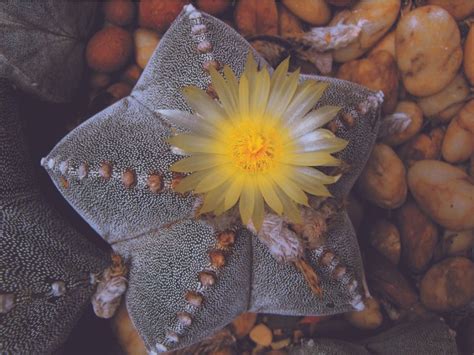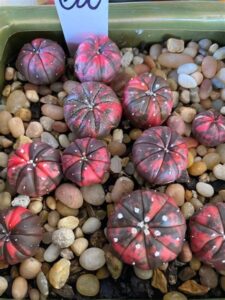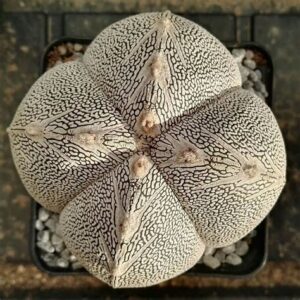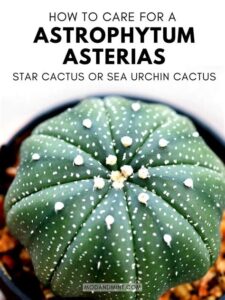Astrophytum, commonly known as star cactus, captivates the hearts of succulent enthusiasts and horticulturists alike. These cacti, which originate from the arid landscapes of Mexico, are renowned for their striking appearance, unique patterns, and ease of care. Yet, beneath their unassuming exterior lies a wealth of complexity that requires attention to detail for successful cultivation. This article provides comprehensive insights into the proper care and maintenance of Astrophytum, ensuring your cacti flourish and thrive in your home or garden.
Plan Your Environment: Optimal Conditions for Growth
Lighting Considerations
Astrophytum cacti thrive in bright, indirect sunlight, making it imperative to position them in a location that strikes a balance between light and shadow. Too much direct sunlight can scorch their delicate skin while too little light may hinder their growth. An east-facing window or a well-lit room with filtered sunlight is often ideal. Supplementing natural light with grow lamps during shorter days can help maintain consistent growth.
Temperature Requirements
These cacti are well-adapted to warm climates and prefer temperatures ranging between 65°F and 80°F (18°C to 27°C) during the day. At night, they can tolerate a drop to around 50°F (10°C). However, prolonged exposure to temperatures below 50°F can lead to stress and potential demise. During winter months, lowering the temperature for a period can simulate their natural dormant state, but precautions must be taken to prevent frost damage.
Humidity and Air Circulation
Astrophytum cacti prefer dry conditions with low humidity levels. High humidity can foster rot and mold, which are detrimental to their health. Good air circulation is equally essential, especially in a greenhouse or indoor plant setting. Utilizing fans or regularly opening windows can help maintain adequate airflow, allowing your cacti to thrive.
Nourishing Your Cacti: Watering and Fertilization
Watering Techniques
The most crucial aspect of caring for Astrophytum is mastering the art of watering. Overzealous watering is often the downfall of many a succulent. The general rule of thumb is to allow the soil to dry out completely between waterings. During the growing season, typically from spring to fall, these cacti should be watered every two to four weeks, depending on the climate and the specific conditions of your growing environment. In the winter months, reduce watering frequency significantly, as they enter a dormant phase.
Choosing the Right Water
When watering, it’s vital to use distilled or rainwater instead of tap water, especially if it contains high mineral content. Cacti are sensitive to chemicals and can suffer from accumulated salts in the soil. Watering deeply and allowing excess water to drain thoroughly is imperative to avoid root rot.
Fertilization Practices
Astrophytum cacti benefit from a balanced, diluted fertilizer during the growing season. Using a formula specifically designed for cacti or succulents, feed your plants once every 4-6 weeks to promote growth. Avoid fertilizing during their dormant phase in winter. Additionally, incorporating slow-release pellets into their soil can provide essential nutrients without the risk of over-fertilizing.
Soil Matters: Choosing the Right Medium
Potting Soil Selection
These succulents require well-draining soil to prevent water retention that can lead to root decay. A specialized cactus mix is advisable, but you can also create your own blend. Mixing standard potting soil with coarse sand, perlite, or pumice can enhance drainage while retaining a minimal amount of moisture.
Repotting Techniques
Repotting should be done when the cactus outgrows its container or if the soil has degraded over time. This typically occurs every 2-3 years. Choose a pot that is only slightly larger than the current one to avoid excess soil that can retain too much moisture. Be cautious of the spines when handling the cactus, and allow the plant to acclimate to its new environment gradually.
Common Challenges: Troubleshooting Astrophytum
Pest Management
While Astrophytum is generally resilient, they can occasionally attract pests such as spider mites, mealybugs, and scale insects. Regularly inspect your cactus for signs of distress, such as discoloration or webbing. Treat infestations promptly with insecticidal soap or organic alternatives to halt damage and preserve the health of your plants.
Disease Prevention
Root rot and fungal infections can devastate your Astrophytum if waterlogged soil is not managed. Signs of trouble may include mushy stems, yellowing, or an unpleasant odor emanating from the soil. To mitigate these risks, always ensure proper drainage, and keep the plants dry. If rot occurs, removing the affected areas and repotting in fresh soil can sometimes save the cactus.
Enhancing Your Collection: Propagation Techniques
Seed Propagation
For the adventurous gardener, propagating Astrophytum from seeds can be a rewarding endeavor. Seeds can be sown in a mixture of cactus soil and sand, placed in a warm location with adequate light. Keeping the soil lightly moist and maintaining high humidity with a plastic cover can stimulate germination, which may take several weeks to months.
Offsets and Cutting Propagation
Some species of Astrophytum produce offsets, which can be removed and replanted to expand your collection. Ensure the cuttings are allowed to callous over before being planted in soil. This minimizes the risk of rot and promotes successful rooting.
Fostering Fascination: The Aesthetic Appeal of Astrophytum
Beyond their captivating forms and fascinating cultural history, Astrophytum cacti are a symbol of resilience. They draw attention for their unique features, such as their ribbed surfaces and beautiful blooms. When cared for appropriately, these cacti can become lush, vibrant pieces of living art that bring joy and a sense of tranquility to any space.
In conclusion, understanding the intricate care requirements of Astrophytum can enhance both the experience of cultivation and the health of the plants themselves. The combination of proper lighting, watering, soil selection, pest management, and propagation techniques will enable you to successfully nurture these extraordinary cacti. As you delve into the wonderful world of Astrophytum, you not only foster your gardening skills but also deepen your connection to nature’s resilience and beauty.





Leave a Comment